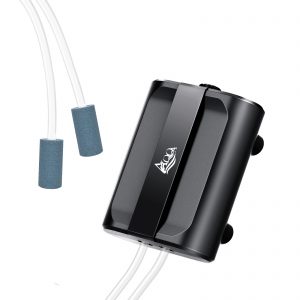Introduction
Aquariums, as part of home decoration, not only add interest to life but also provide a beautiful space for observing aquatic plants and animals. However, a perfect aquarium cannot be achieved without appropriate lighting. Lighting not only affects the aesthetics of the aquarium but also directly relates to the health and growth of aquatic organisms. This article will delve into how to choose the best aquarium light for you to ensure that your aquarium is both beautiful and healthy.
I. Understanding the Basic Types of Aquarium Lighting
-
Fluorescent Lights
- T5 and T8 Fluorescent Tubes: These are commonly found on the market and suitable for various sizes of aquariums. They provide medium brightness and color temperature, ideal for the growth of aquatic plants and the observation of fish.
- Compact Fluorescent Lights (CFL): With higher light efficiency and longer lifespan, they are a preferred choice for many aquarium enthusiasts.
-
LED Lights
- Full-Spectrum LED Lights: They can simulate natural light and provide various spectra required for the growth of aquatic plants, making them a mainstream choice for modern aquariums.
- Adjustable LED Lights: Allow users to adjust brightness and color temperature according to needs, perfect for aquariums requiring precise control of the light environment.
-
Metal Halide (MH) and High-Intensity Discharge (HID) Lights
- These light sources are bright and suitable for large aquariums or coral reef tanks that require intense lighting. However, they consume more power and generate significant heat, requiring a good cooling system.
II. Choosing Lighting Based on Your Aquarium Type
-
Freshwater Aquariums
- For freshwater aquariums with lush aquatic plants, full-spectrum LED lights or compact fluorescent lights are good choices. These light sources can provide the photosynthesis spectrum required for plant growth.
-
Saltwater Aquariums
- Corals and certain fish in saltwater aquariums require higher intensity and broader spectrum lighting. Metal halide lights or adjustable LED lights are better options as they can provide a spectrum closer to natural light, contributing to coral coloration and growth.
-
Biological Aquariums
- Aquariums focused on displaying various aquatic organisms require soft and uniform lighting. Fluorescent lights or low-brightness LED lights are ideal, meeting observational needs without stressing the organisms.
III. Considering Other Important Factors of Lighting
-
Brightness and Color Temperature
- Brightness determines the lighting intensity of the aquarium, while color temperature affects the color and atmosphere of the light. Choosing the right brightness and color temperature for your aquarium type and organism needs is crucial.
-
Energy Consumption and Lifespan
- Different types of aquarium lighting have different energy consumption and lifespans. LED lights typically have lower energy consumption and longer lifespans, making them an energy-saving and environmentally friendly choice.
-
Installation and Maintenance
- Consider the ease of installation and maintenance costs of the lighting system. Some lighting systems require regular bulb replacements or cleaning of light covers, which need to be considered when purchasing.
IV. Conclusion
Choosing the best aquarium light for you is a comprehensive process involving multiple factors such as light type, aquarium type, brightness and color temperature, energy consumption and lifespan, as well as installation and maintenance. By deeply understanding these factors and making informed choices based on your specific needs, you will be able to create an aquarium environment that is both beautiful and healthy. Remember, appropriate lighting not only enhances the aesthetics of the aquarium but also provides an ideal habitat for your aquatic organisms.









Leave a reply
You must be logged in to post a comment.